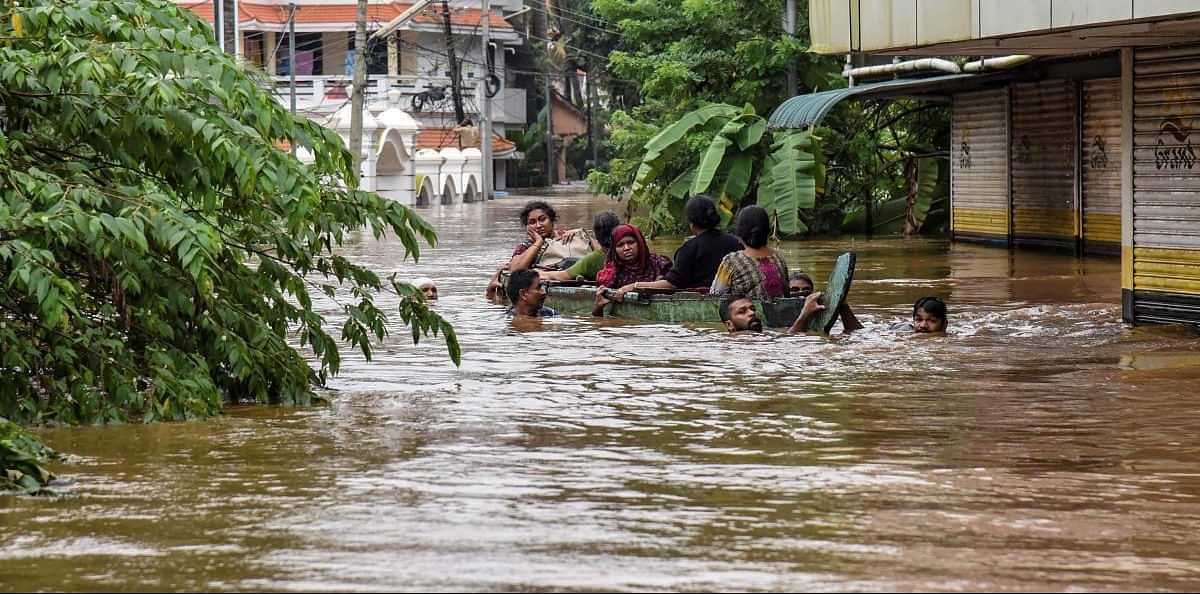
Year after deluge that sank hopes, Kerala braces for heavy rains

“I woke up to the ring of my phone at 4.30 in the morning. It was my mother. There is water everywhere and I might not be able to call you later was all that she said. I panicked and got anxious,” said Shreya (name changed), who was in Mumbai at the time of 2018 Kerala floods.
“Living far and not knowing what to do when your whole family was drowning, was a different experience,” she said, adding, “It’s scary to even hear it is raining in my hometown now.”
The heavy rains and massive flooding in July-August 2018, which was 116 per cent more than the normal, had claimed the lives of 483 people and submerged 13 of the state’s 14 districts under water, causing large scale devastation and damage to property. Almost 5.4 million people were affected and around 1.4 million were displaced.
A year later, as the state is again receiving heavy rains, the Indian Meteorological Department (IMD) has issued a red alert for Idukki, Malappuram and Kozhikode districts. Besides the prediction of heavy rainfall of over 240mm in the next 24 hours, one can also expect landslides in hilly areas.
“We have already shifted all our documents and valuables to the top floor. We don’t want to lose them all again,” said Raghu (name changed) with a little panic in his tone. “The rains are no more about chai and pakoda. It’s not really the same anymore.”
When Vijaya came home after 14 days in a relief camp in Thrissur during the floods last year, all that she could find was the walls of her house. “Everything else was washed away. It is really horrifying to even remember all that. We have still not come out of that distress.”
“One thing I can never forget was the vulnerability of the aged population,” said Athira, a flood survivor. “Even in that struggle, they never complained. They always looked back at their children and grandchildren and kept asking, ‘Are you safe? Are you fine?’”
‘How worse can it get’ was a question that everybody kept asking back then. On the contrary, people believe that better preparation could mitigate the suffering.
“I keep thinking that if this happens again how can I handle it better, do I stock up food, water and medicines, what kind of atrocities did we commit that led to this situation, etc. Financially and emotionally I cannot imagine my family going through the flood situation again,” Athira said.
“If it happens again, we might probably become poorer but definitely stronger too,” Vijaya said.
Since the 2018 floods, the state government has shaken up its flood response system. The Kerala State Disaster Management Authority (KSDMA) has clearly spelt out roles and responsibilities for each department in its handbook.
For instance, the handbook published on May 25 says that the state electricity board and water board will be asked to notify district level disaster monitoring cells about the status of dams and subsequent plans on controlling their outflow.
During the 2018 floods, there was a hue and cry over improper dam management in the state. 35 out of the 54 dams in the state were opened. Heavy rains in Wayanad and Idukki had caused severe landslides and all five gates of the Idukki dam were opened at the same time.
The KSDMA handbook mentions that the water board will also have a person appointed round the clock, to monitor daily rainfall and water levels in dams and contact the emergency disaster management cell.
The tourism department has been asked to restrict visitors if there are more than two days of intense rain in a location.
Kerala also started the ‘Rebuild Kerala Initiative’ last November to reconstruct and rebuild the state after last year’s floods. The state is in the process of finalising loans ($500 million from World Bank, $200 million from Asian Development Bank, $100 million from a German state-owned development bank). The state has also collected about ₹3,000 crore from charity donations.
Apart from the preparatory measures, a positive aspect emerged from last year’s floods. A state, which wasn’t prone or wasn’t anticipating a calamity, witnessed mosques, temples, and churches turning into rescue camps, welcoming people irrespective of their religious identity.
Anjali, another survivor rounds up the situation aptly: “We fight over land and religion all the time. But we tend to forget that nothing is under our control. What happened to Kerala last year was more than a disaster. We lost lives, homes, at one point, even hope. But we are breathing again, we are stronger now.”


